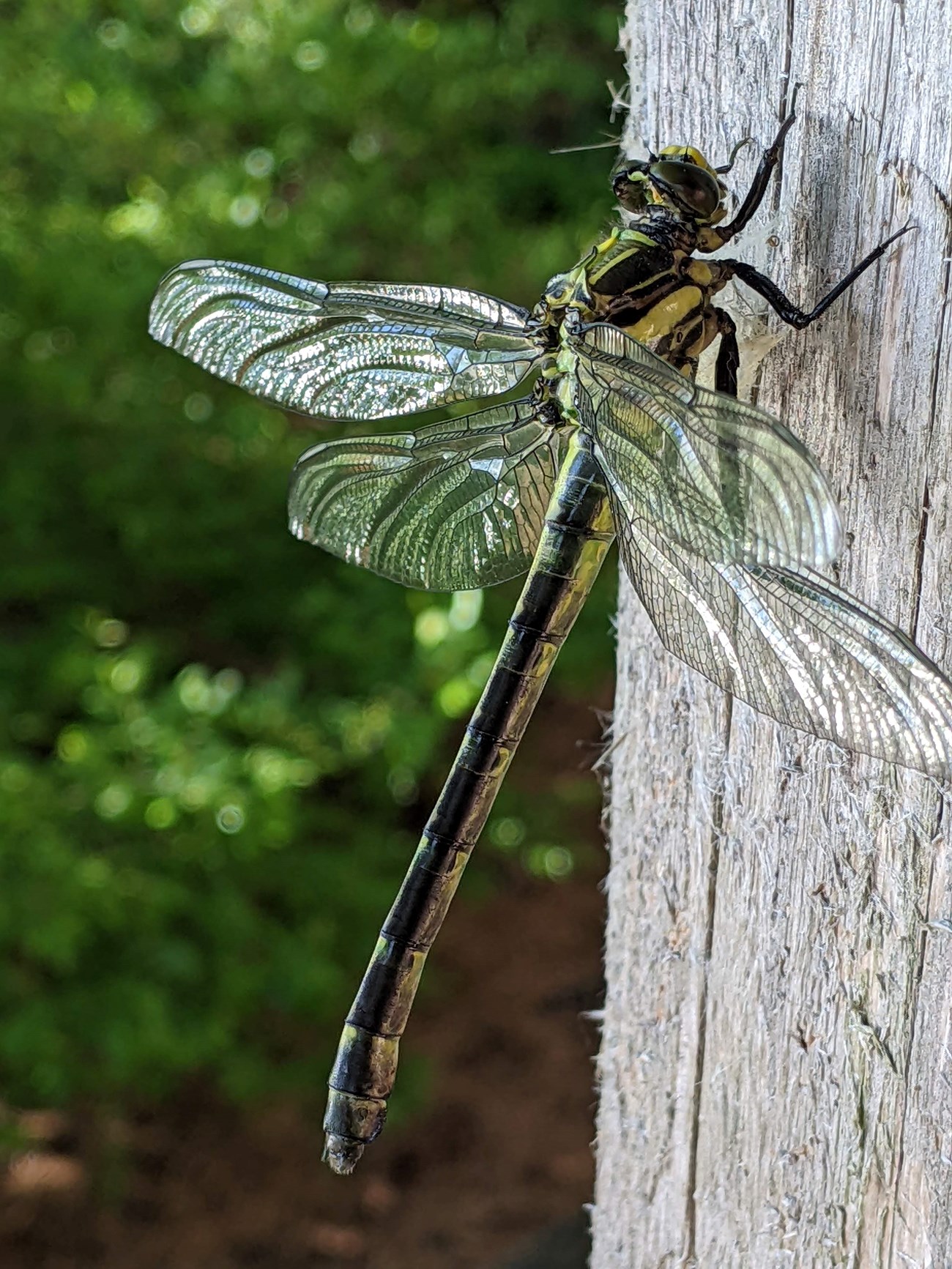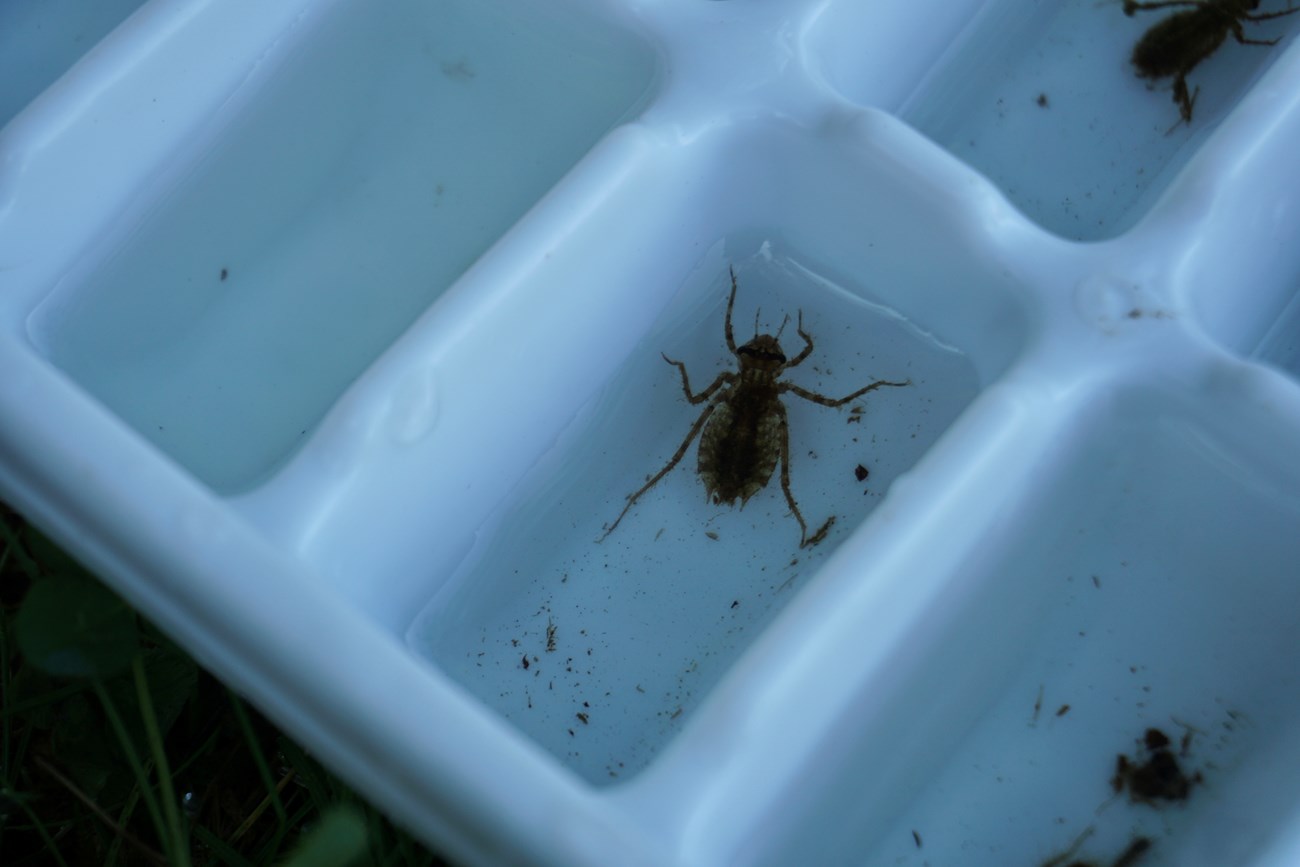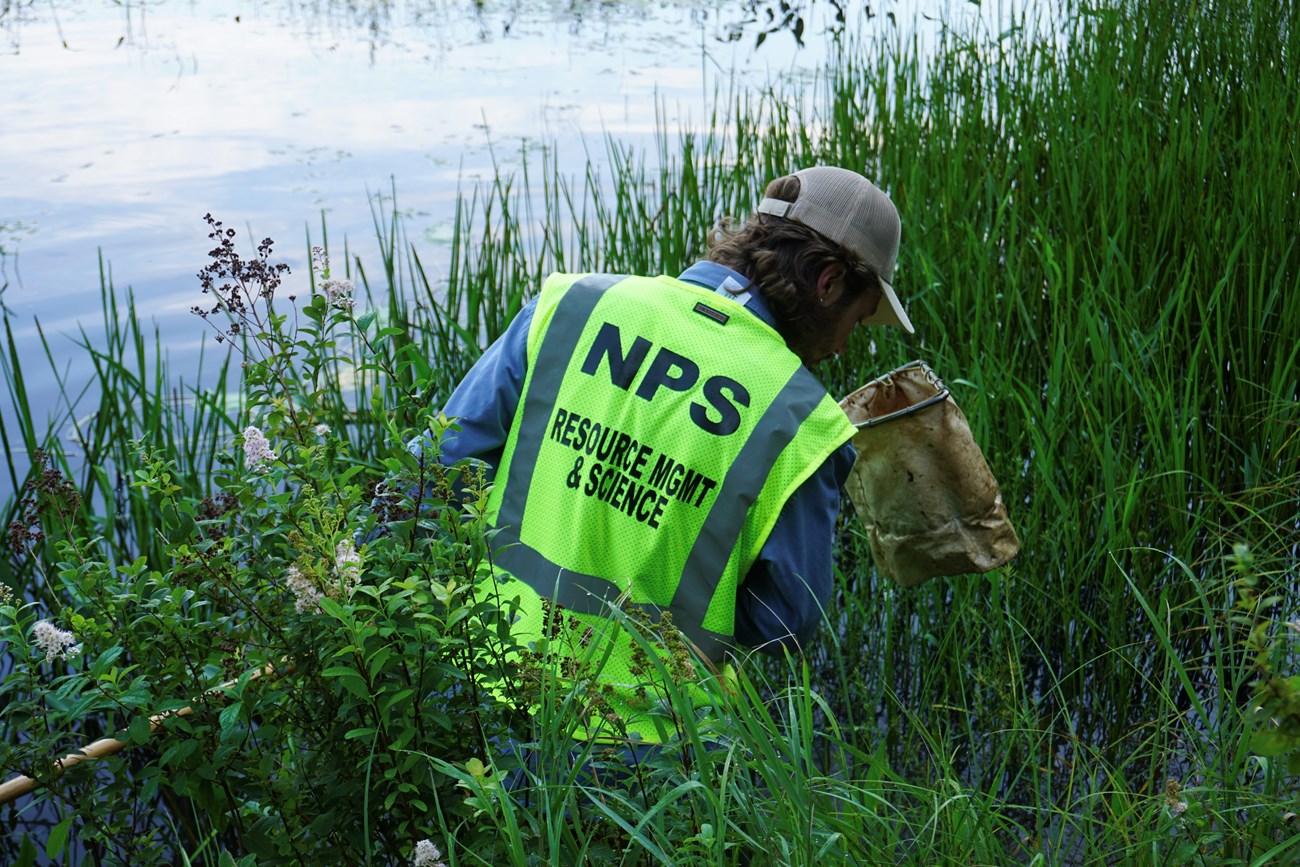Last updated: September 11, 2024
Article
Data from the Citizen Science Dragonfly Mercury Project Support Strengthened Emissions Standards Nationwide

NPS/Nina Foster
Mercury is a globally distributed environmental contaminant that infiltrates even the most protected settings, including national parks. The toxic metal threatens the health of humans and wildlife, becoming more concentrated in organisms as it moves up the food chain and leading to fish consumption advisories when high mercury levels make fish unsafe to eat.
Both national and international efforts exist with the aim of reducing mercury emissions and exposure. Across the United States, the Environmental Protection Agency (EPA) has established emissions limits for industries that release mercury and other harmful pollutants into the atmosphere. In 2023 and 2024, the EPA proposed rules that would further reduce the mercury emissions from coal- and oil-fired power plants; large municipal waste combustors; and taconite iron ore processing facilities, which generate materials used to produce iron, steel, and cement.
Both national and international efforts exist with the aim of reducing mercury emissions and exposure. Across the United States, the Environmental Protection Agency (EPA) has established emissions limits for industries that release mercury and other harmful pollutants into the atmosphere. In 2023 and 2024, the EPA proposed rules that would further reduce the mercury emissions from coal- and oil-fired power plants; large municipal waste combustors; and taconite iron ore processing facilities, which generate materials used to produce iron, steel, and cement.

Tim Watkins
Scientists can use automated sensors to measure the amount of mercury pollution falling from the air in rain, snow, and dust — but that measurement doesn’t tell us about the impact of mercury on wildlife and people who eat animals, especially fish. Measuring mercury in animals is critical for determining how and where the toxin accumulates, and how it affects wildlife and public health. Scientists have often done this with the tissues of fish or birds, but dragonfly larvae are more accessible and cheaper to study. They also occur in a broader range of aquatic habitats.

NPS/Nina Foster
Volunteers Wade In
Over 7,000 volunteers and researchers across more than 150 national parks and other protected areas have participated in the DMP since 2009. The duration and geographic extent of the initiative makes for robust, long-term datasets that reveal the locations and severity of mercury pollution in parks throughout the continental United States. The project is also developing models to forecast mercury risk in different bodies of water.“We can look simultaneously across different regions and habitats,” explained Collin Eagles-Smith, a research ecologist with the U.S. Geological Survey who co-leads the DMP. “The patterns we see provide insights into the processes that are driving mercury movement and accumulation in ecosystems, as well as evidence of changes happening at different scales.”

NPS/Nina Foster
Data Inform New Standards
In response to the EPA proposals regarding waste incineration sites, coal- and oil-fired power plants, and taconite facilities, the NPS submitted a summary of DMP data from park units near the industries under review. Their input emphasized the sensitivity and mercury risk of natural landscapes in close proximity to these industrial sites, crafting an even more compelling case for strengthened emissions standards.For example, technical comments summarized in support of the taconite rule highlighted DMP data from 40 water bodies in 8 NPS units of the upper Great Lakes near taconite ore processing plants in Minnesota and Michigan. Three-fourths of the dragonfly mercury data from these sites fall into the moderate or higher impairment categories for potential mercury risk. An index of moderate impairment or higher suggests that mercury concentrations in top predator fish species may exceed the EPA benchmark for protection of human health, threatening the NPS mandate to provide visitor enjoyment opportunities and preserve resources unimpaired for future generations.
“The Dragonfly Mercury Project is the largest ongoing biological assessment of mercury contamination and risk in the United States,” said Colleen Flanagan Pritz, an NPS ecologist who co-leads the project with Eagles-Smith. “We were positioned to use the data that have been collected in parks across the nation in support of the proposed EPA standards.”
The national policy changes supported by DMP data will help safeguard human and wildlife health by driving reductions in mercury and other toxins. For example, the new standards for taconite facilities are expected to reduce the industry’s mercury emissions by about 33 percent, or 247 pounds per year.

NPS/Nina Foster
Citizen Science Proves its Value
The DMP also has implications for global policy. The Minamata Convention on Mercury is a United Nations-sponsored treaty dedicated to protecting human health and the environment from mercury’s adverse effects. One requirement of the treaty is effectiveness evaluation; signatories must monitor whether reductions in mercury use and emissions actually reduce environmental concentrations of the contaminant. The best methods for conducting the evaluation are still being discussed, but collecting dragonfly larvae for mercury analysis stands out as a promising option globally.“The Dragonfly Mercury Project is a really accessible tool that we and others can tap into, and it will tell us if we’re successful at reducing emissions over time,” said David Schmeltz, a senior analyst in the EPA’s Clean Air and Power Division.
These policy efforts demonstrate the power of citizen science. The DMP could not operate on such a large scale without the dedication of volunteers. The project is far more than a fun outdoor activity; citizen scientists contribute valuable, comprehensive data when they venture into freshwater habitats with nets and seek the predatory dragonfly larvae.
Ecologist Hannah Webber of Schoodic Institute at Acadia National Park, who’s been involved with the DMP from the beginning, considers the application of project data to national and global policy a triumph. “The dream of any citizen science effort undertaken by a federal agency is to be able to move on from data points to management and policy,” she said.
“The DMP is really valuable for providing data that ultimately point to the success or lack thereof of different policy initiatives,” said Eagles-Smith. “The project informs research, monitoring, and resource management that protect human and wildlife health.”
Written by Nina Foster, a 2024 Scientists in Parks intern at Acadia National Park. Nina is exploring her professional interests in writing about people, places, science, and history.
